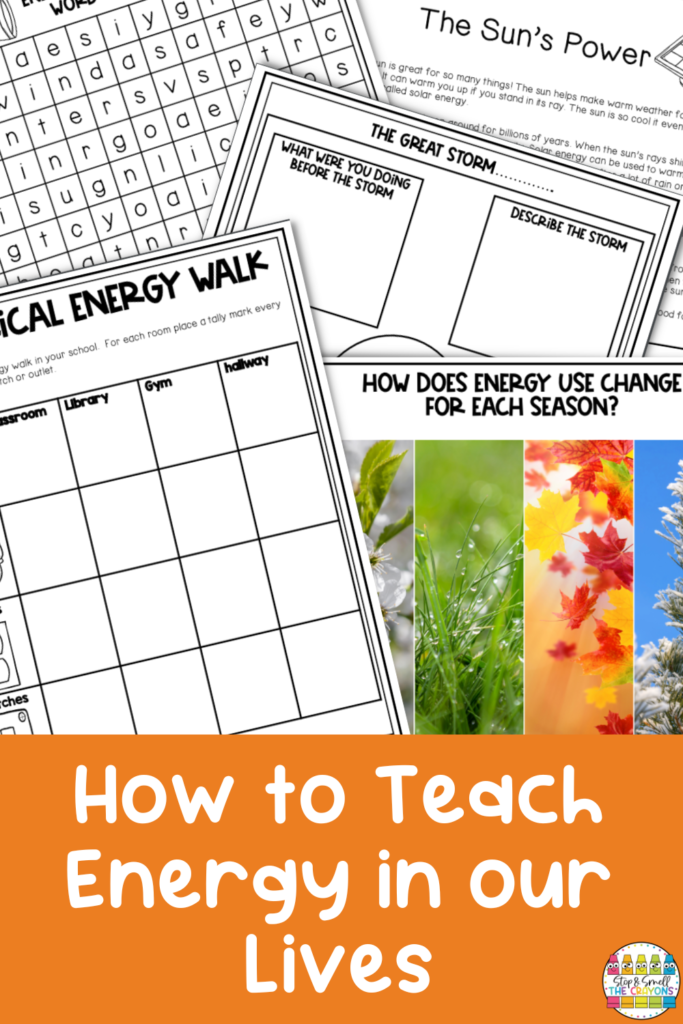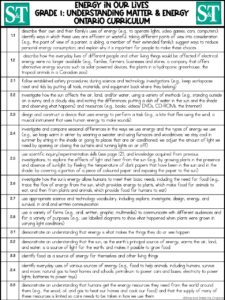When I first began to teach about Energy in Our Lives, I got really nervous! There are so many smaller topics within this one standard that I didn’t know how I was going to fit everything in or feel cohesive. If you get where I’m coming from, then you will be happy to hear that teaching Energy in Our Lives is not only fun but not difficult at all! If you are looking for teaching ideas, here are a few of the fun activities I came up with to help bring this Energy unit to life!
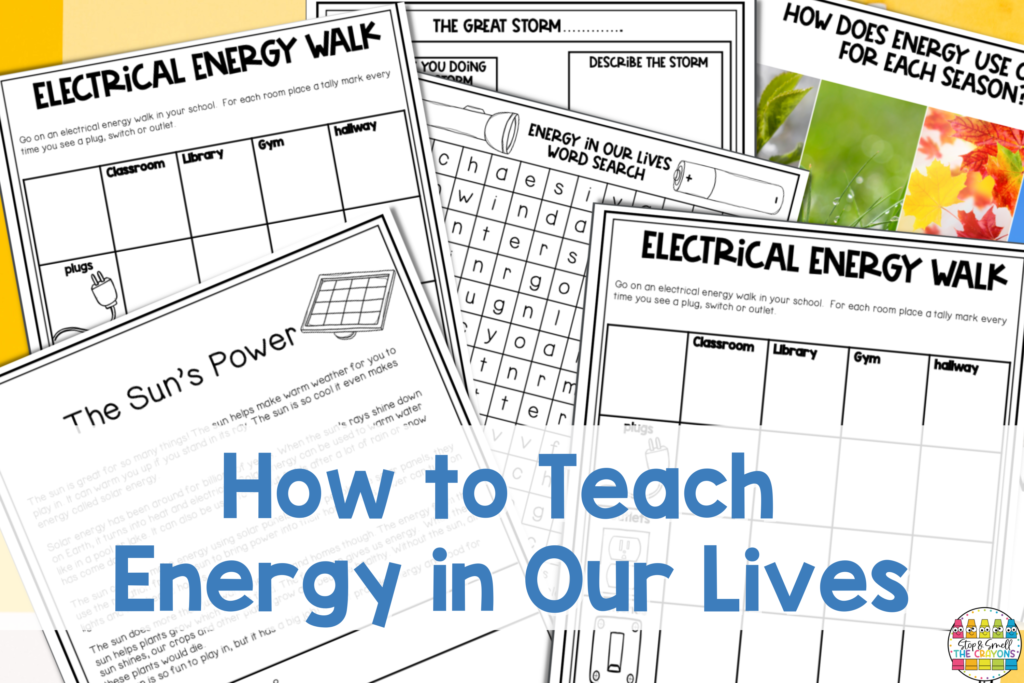
Identify Sources of Energy In Our Lives Used in Everyday Activities
Young students are a pretty observant bunch. They also love to share what they know about things! Start your Energy in Our Lives Unit with a brainstorming session. Begin by asking your students to identify different sources of energy they can think of, such as the sun, wind, water, and electricity. Write their ideas on the board or create an Anchor Chart.
To make this activity even more engaging, show students a Powerpoint slideshow of real-life photos and ask “What is the source of energy used in this photo? What makes it move?” Add their answers to the class Energy Sources Anchor Chart.
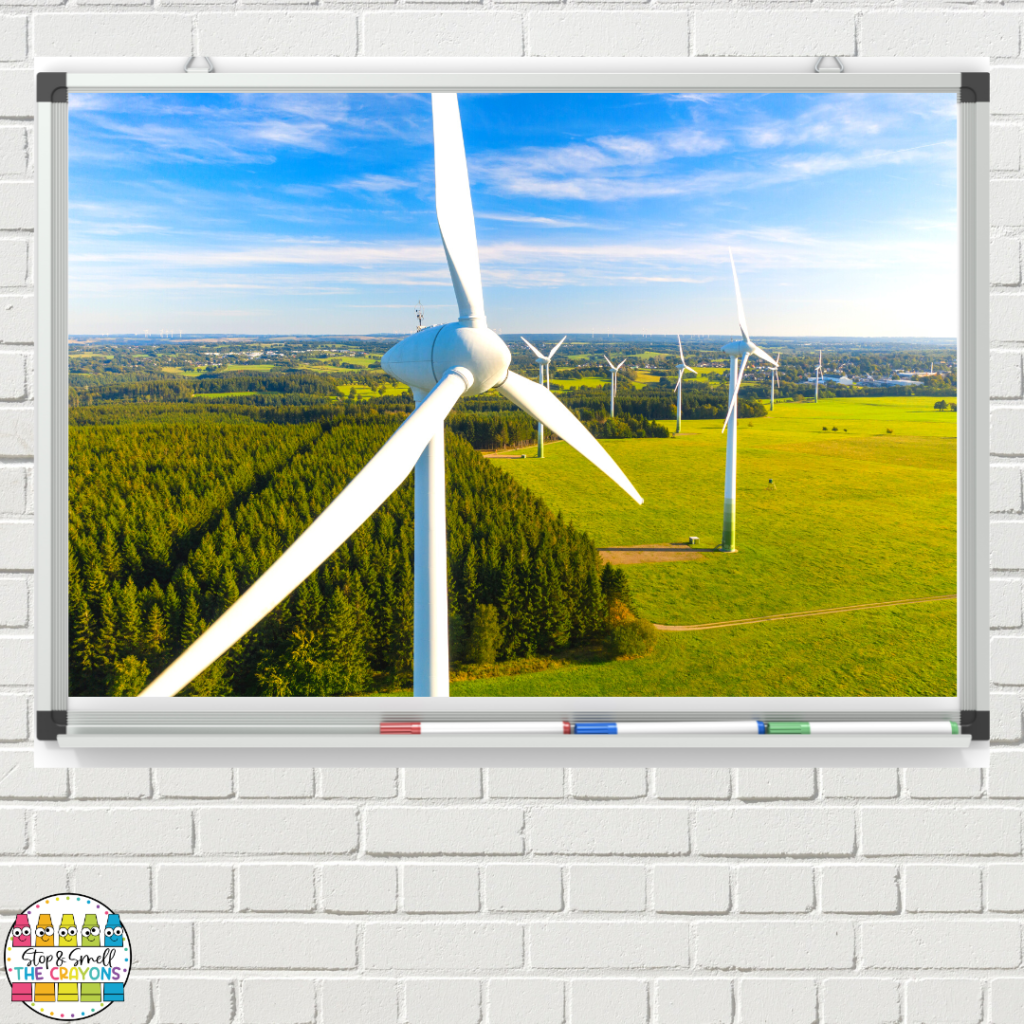
Possible Answers they could include are:
- Electricity
- Wind
- the Sun
- Gas
- Batteries
- Food
Don’t have time to put together pictures or slide show of these Energy Sources? I have one already created! Check out my Energy in Our Lives Science Unit! A ready-made, beautifully illustrated slideshow helps students see Energy Sources in real life. Print-and-go worksheets help students apply what they have learned from our discussion! These introductory activities are a great way to get your students excited about this unit!
Explore Energy with Hands-on Real Life Experiences
Young learners love having real-life experiences with the topics they are learning about! It helps them to connect the information they are learning to the world around them. Your visual and kinesthetic learners will also benefit from real-life experiences as this is how they learn best.
Here are a few of my favorite ideas:
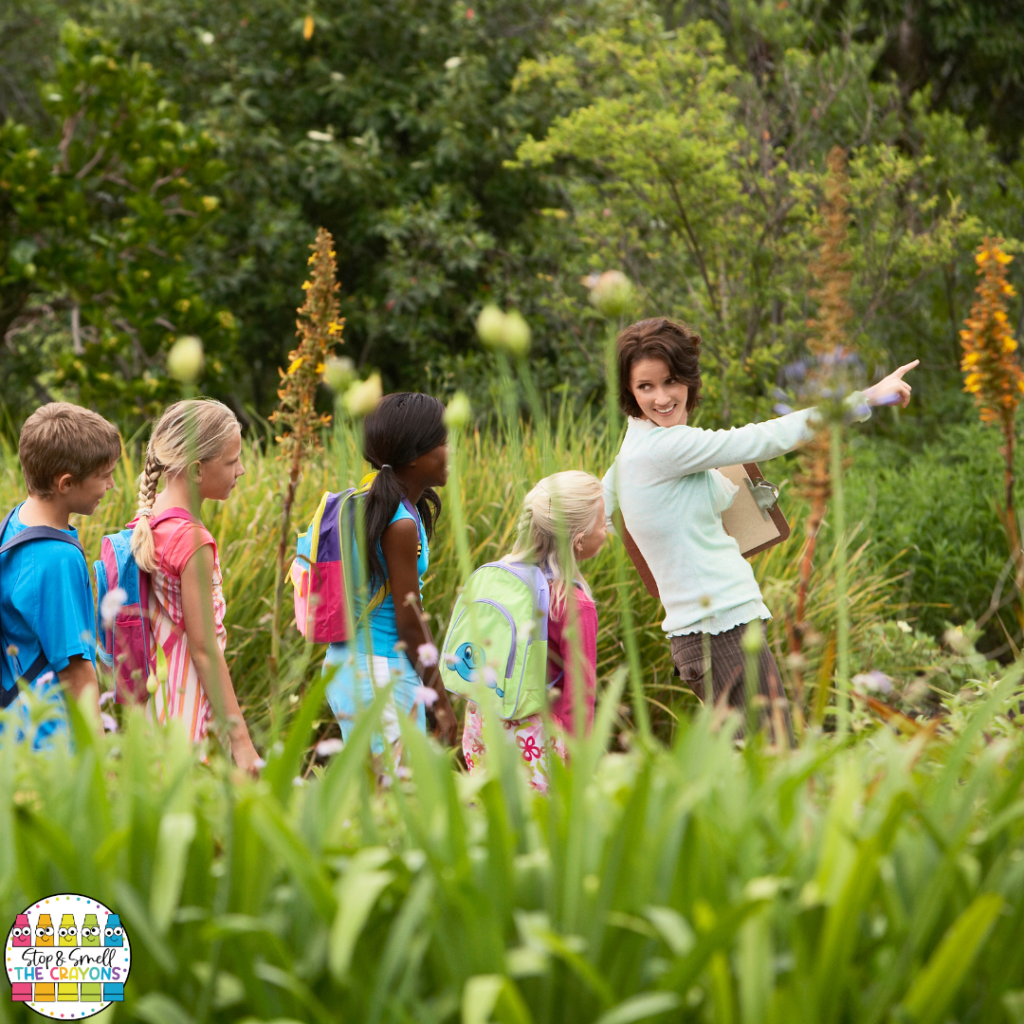
- Electricity Walk – First show students how to identify electricity (plugs, switches, outlets) and then take them for a walk around the school to identify electrical power sources. Can they predict which room of the school will have the most electricity?
- Community Walk – Take a walk through the community and identify a dog running as food energy or muscle energy. What about clothes drying on a line? Solar and wind energy! Did you see a car drive past? Gasoline!
- Playground Walk – Ask your students several questions about what they see on the playground. How do things move? What makes things move? How does energy on the slides work? How about the swings? What about the birds and the bugs? Things that move need energy to move. Where does their energy come from? Once students have this discussion, let them play and think about their own energy sources!
Check out my Energy in Our Lives Science Unit for supplemental printables and activities that give students the opportunity to apply what they have learned from their real-life experiences!
Let Toys Teach about Different Sources of Energy
Toys are awesome for helping kids learn about energy! They can get kids excited to experiment and explore and ask questions about how things work. By playing with energy-related toys, kids will understand the different ways that energy can be used. Have a Toy Day where students can bring in a toy from home. Students will play with the toys and explain the source of energy the toy has to make it move!
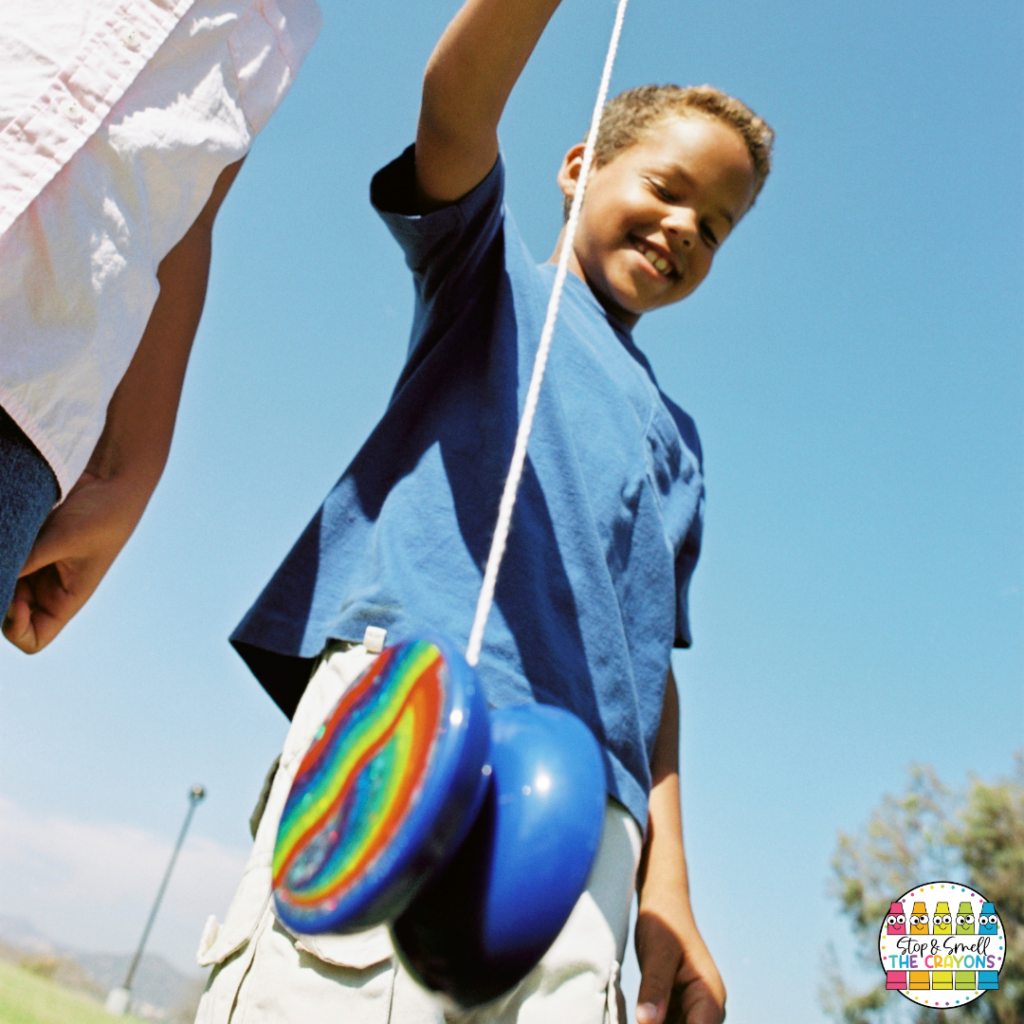
Here are a few examples of toys your students could bring in for this activity:
- Yo-yo – Energy comes from the student to make it move.
- Video game – Energy comes from batteries.
- RC Car – Energy comes from gas or a battery.
- Kite – Energy comes from the wind.
- Tub toy – Energy comes from water to turn the wheel.
This activity provides hands-on learning that is extremely important to kinesthetic learners. It also encourages our students to think deeply with the simple act of letting them explore and play! Be sure to play with them, as well! Ask your students questions about what they’re doing and why the toys work the way they do. Students will learn so much about sources of energy and will never forget it either!
Energy Consumption vs. Energy Conservation
Using the illustrated prompts in my Energy in Our Lives Science Unit, I explicitly teach my students about Energy Consumption and Energy Conservation. We talk about what those terms mean and what those terms look like in real life.
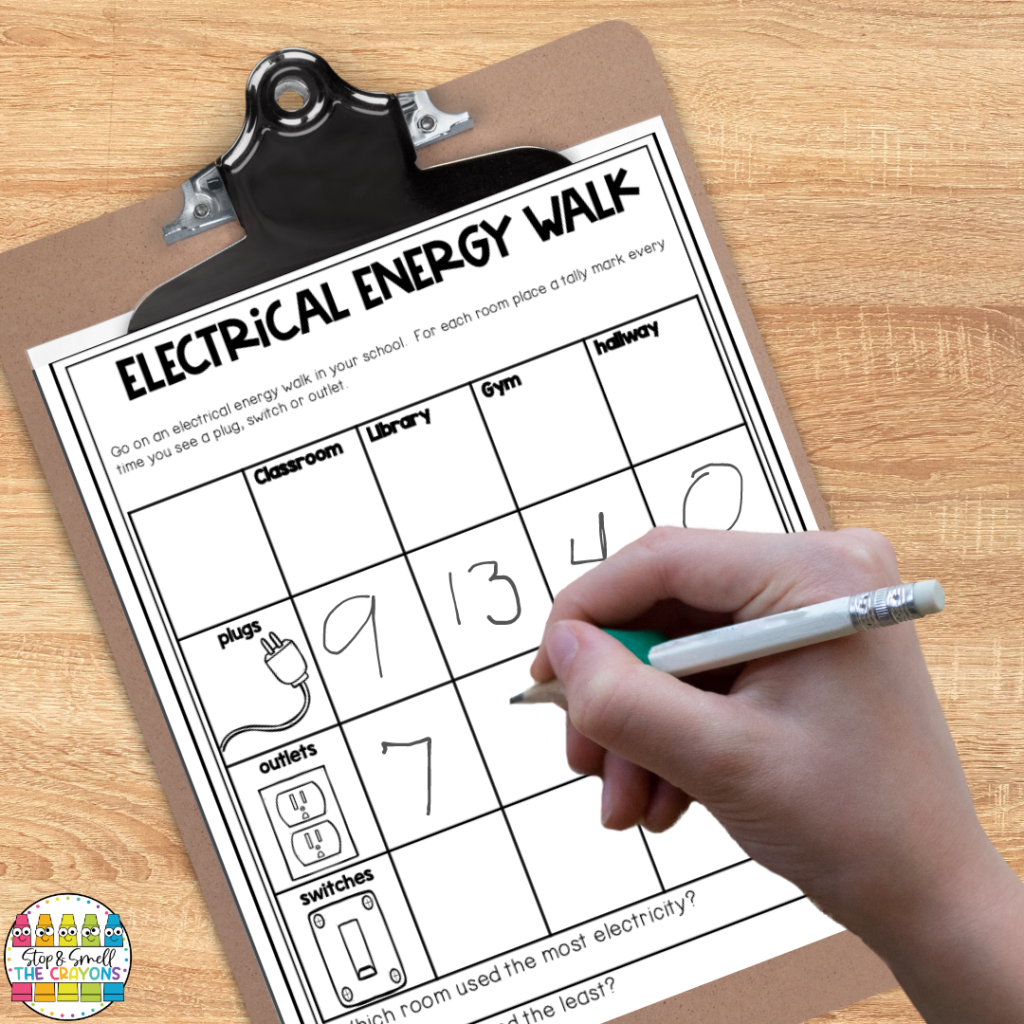
Then, we do one of my favorite activities! We take a walk through the school identifying various ways they see energy being consumed. This could be done with just our eyes and pointing out what we see. If you want some written accountability, students could keep a tally of the different ways energy is being used. Once they have identified the energy consumption, I sit them down in a hallway or quiet space and I reverse the task.
Now let’s do a walkthrough and see how much of that energy we’re using is actually being wasted. Students are downright THRILLED to point out how energy is being wasted! They’ll probably point out things you didn’t even notice!
Once back in the classroom, transfer this information to a class poster on how to conserve energy. Students could even create their own mini conservation posters with tips and drawings on how to save energy! Hang the posters up as sort of a “Student Pledge” to help them be more mindful of energy consumption and conservation!
Doesn’t teaching about Energy in Our Lives sound fun?
I know it seemed overwhelming (and even… gasp… boring!) at first, but now you have a few ideas in mind! Teaching about Energy in Our Lives can be an enjoyable experience for both you and your students!
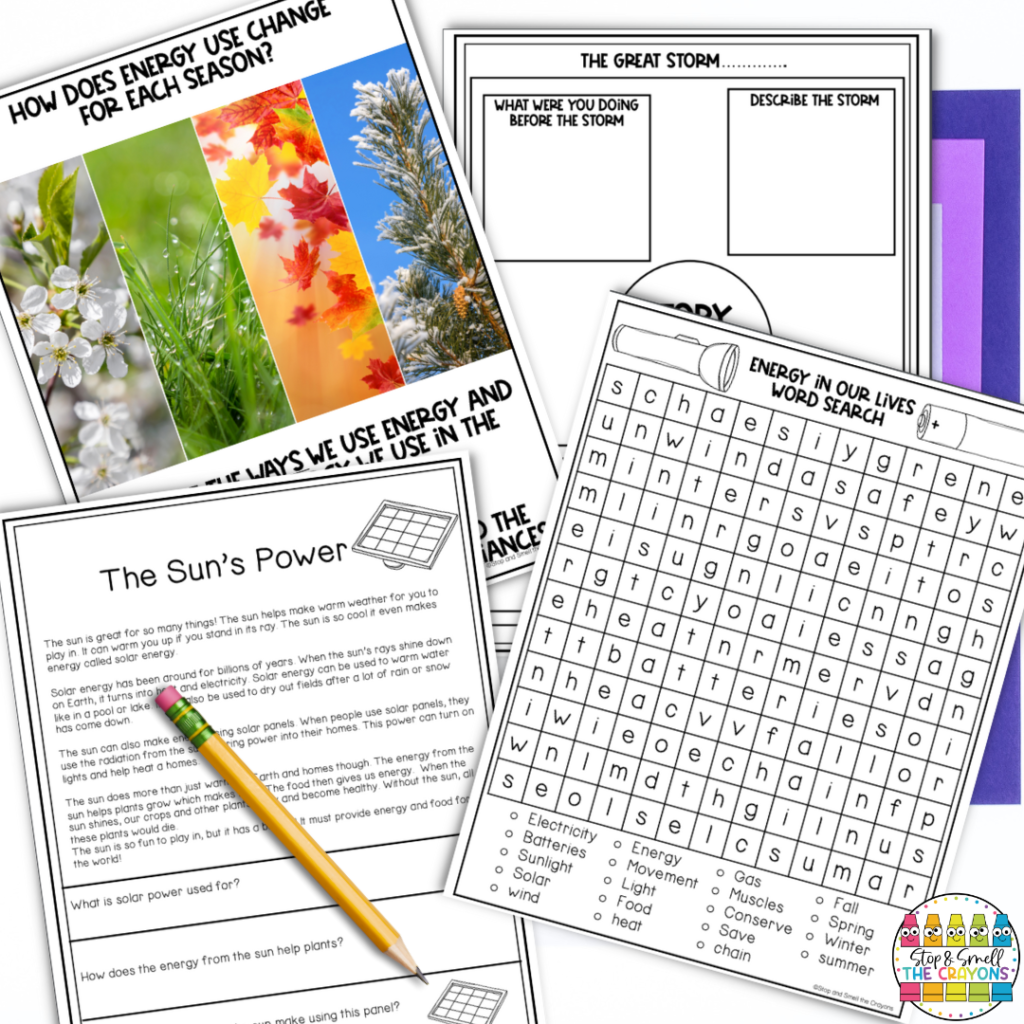
And do you know what’s even better? Fun, done-for-you resources and activities that you project on a board or simply print off before class! In my Energy in Our Lives Science Unit, your Lesson Plans are already written for you and include everything you need to teach about sources of energy. The activities in this post are included in this resource as well as Discussion Flash Cards, Writing Prompts, Illustrated Vocabulary Cards, and so much more!
Head on over to my TPT store to grab your game-changing, time-saving, all-in-one-place Energy in Our Lives Science Unit!
If you are looking for more engaging and hands-on science resources for first grade, check out these blog posts filled with practical and ready-to-use classroom ideas.
- Energy in Our Lives
- Needs and Characteristics of Living Things
- Materials, Objects, and Everyday Structures
Be sure to grab this Energy in Our Lives Free Checklist! It was created for Grade 1 Ontario Science Curriculum, but anyone can use it! Simply click on the image to download it!
Pin it!
Be sure to save these ideas on how to teach energy to your favorite science or first grade Pinterest board today!
